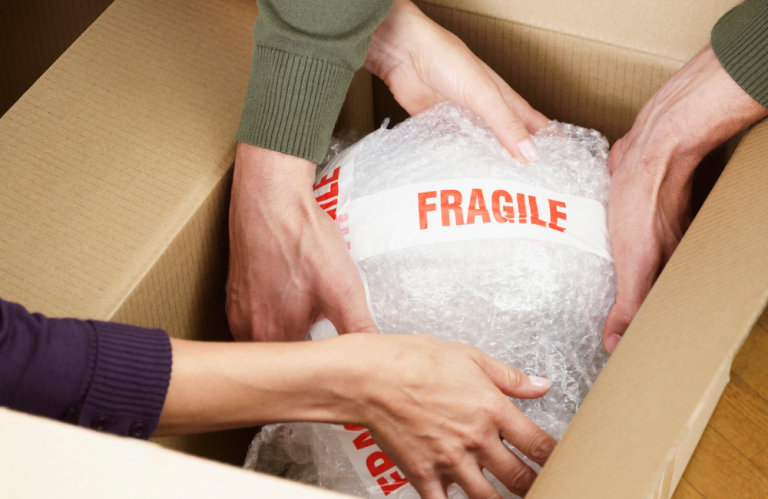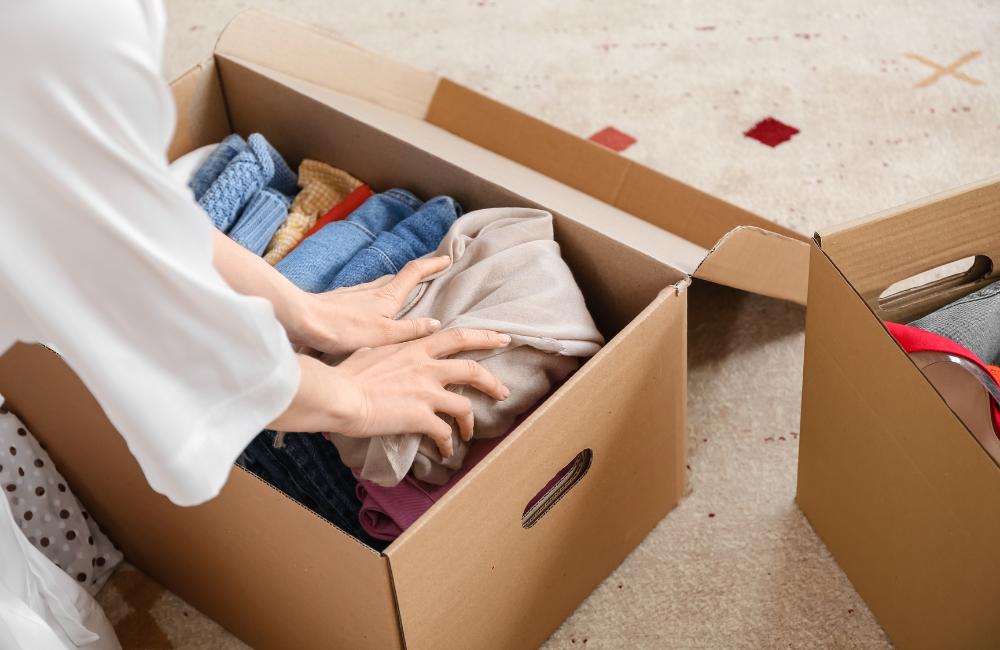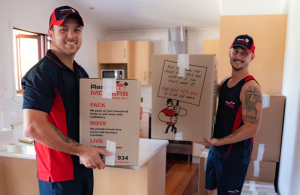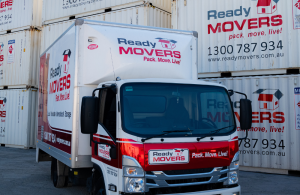You’ll need our packing guide for moving houses, whether you’re planning to relocate a suburb over, interstate, or even internationally. While moving house can be one of the most exciting times in your life, it can also be a massive source of stress.
So, if you’re looking for the ultimate packing guide for moving houses to avoid that stress, we’ve got you covered. Our article delves into everything you need to know, from how to pack glassware to how to transport your potted plants safely.
Mastering the various packing strategies from our ultimate packing guide is the key to a smooth move. Packing is more than just throwing items in a box. It requires care and attention to ensure your belongings are transported securely and are easy to unpack.
Packing Glassware
When it comes to the ultimate packing guide, we’re going to tackle the hardest items first—glassware. Whether you’re packing everyday glassware or intricate pieces, it requires meticulous attention to detail, careful handling, and the right tools.
First of all, you’ll want to buy or label a box with the warning that there are fragile items inside, especially if you’re hiring movers. The last thing you want is someone else unaware that there is fragile, prone-to-shattering glassware when handling the box. Secondly, it’s critical to invest in stacks of bubble wrap and packing paper. They are essential to securing the glassware and keeping all of it safe while handling and transporting it to your new home.
We also recommend compartmentalised box inserts. They are reusable inserts you can place in your moving boxes that provide individual slots for each item. Not only is it extremely helpful for keeping the glassware separate and stopping them from knocking into each other, but it also makes the unpacking process easier as all the items are already organised.
Packing China/Ceramics
Like glassware, packing china and ceramics requires a similar gentle touch. You’ll want to start by stocking up on plenty of bubble wrap and finding a heavy-duty box. The last thing you want is your box breaking on you and your china/ceramics falling out.
Before you start packing the china and ceramic into boxes, you’ll want to wrap each item individually in packing paper. Then, you’ll want to begin by placing the heavier items at the bottom of the box, like any large plates or serving platters.
Strategic placement is the key to successfully and securely packing your china and ceramics. After you’ve packed all the heavier items, you’ll want to begin placing your lighter items on top, like your bowls and plates. This placement is crucial because you don’t want the heavier items at the top, crushing everything else below it when moving. Also, if you’re worried about the weight, don’t risk trying to fit everything in one box. Find another box and start the packing process again with the rest of the items.
Investing in dividers and padding material like packing paper can also help decrease the risk of your china and/or ceramics breaking or getting damaged during the move.
Packing Artwork and Wall Hangings
The last thing you want to do when moving is to damage your possessions, especially if it’s artwork. Before we delve into how to pack and handle any artwork and wall hangings, you need to make sure you have the right supplies. These include:
- Cardboard corners to help keep the corners of your artwork or wall hangings safe. If you’re on a budget, they’re also easy to DIY and make yourself.
- Bubble wrap to help cushion the framed artwork, especially during transport. This will protect both the frame and the art itself from being damaged in the moving process.
- You’ll also want to invest in flat picture boxes. They are essentially cardboard boxes designed specifically for storing and moving artwork and wall hangings.
If you have any expensive art pieces, we also recommend looking into transit insurance for them. If you’re going through a professional removalist company, ensure that they are fully insured and offer a no-damage guarantee.
Packing the artwork and wall hangings doesn’t stop at just putting them in the flat picture boxes, either. You’ll also want to consider the placement in the vehicle you’re using to transport them to the new home. For example, larger and heavier art pieces should be placed securely against the walls of the truck or trailer. Also, avoid placing any heavier items or boxes on top of the artwork’s box.
Packing Books
The ultimate packing guide for books will depend on whether they’re hardcover or paperback. You’ll also want to be careful when it comes to lifting the book boxes. One book might not be heavy, but 10? 20? 40? Their weight can quickly add up.
First of all, when you’re packing books—regardless of whether they’re hardcover or paperback—you want to pack them in a small but sturdy cardboard box. It might seem appealing to pack as many as you can into a giant box, but it’ll increase the risk of hurting yourself and damaging the books in the process.
When it comes to paperbacks, you’ll want to pack them flat (horizontally) and stack them on top of each other. In particular, you’ll want to stack books that are all roughly the same size. That way, it reduces the risk of the spine getting damaged and the books bending. If you end up with any gaps in the box, we recommend filling them with a soft material like paper. You don’t want the books sliding around during transit and damaging each other.
With hardcovers, you’ll want to place them in the box upright (vertically) with the spines up against the sides of the box. If you’re having trouble visualising it, it should look like how you would place your books on a bookshelf. If you have the funds to spare for extra bubble wrap, we also recommend individually wrapping each hardcover before packing them. This will help protect them against any potential bumps or scratches during transit.
Packing Linen and Clothing
When it comes to packing linen and clothing, you’ll want to be prepared. Before we delve into packing techniques, you’ll want to invest in port-a-robes for any clothing you need to move that can’t be folded. Port-a-robes are essentially extra-long cardboard boxes with a built-in metal insert for hanging clothes. That way, you can simulate an actual wardrobe and hang up any suits, dresses, and other garments that can’t be folded.
If you’re looking for an additional layer of protection for any delicate or valuable outfits, we also recommend investing in garment bags. They provide extra protection against dust, dirt and moisture. They’re also available in various materials, like plastic and canvas. For any bulky items that can be folded, vacuum and/or compression bags are a great space-saving choice. It’s perfect for dealing with any big jackets, jumpers, and even bedding like linen. You can then transport them in the vacuum bag or place them in a box for transport.
Finally, for any general clothing items, we recommend just folding them up and placing them in a cardboard box. We’ve found small and medium-sized boxes to be best, as overpacking big boxes can make them hard to transport. If you already own any duffel bags or suitcases, we recommend storing some clothes in them. It’s an efficient way to transport them along with your clothes without taking up as much space or making extra trips.
Also, remember to always label your boxes! This will make the process of packing and reorganising your wardrobe in your new home so much easier. Trust us, your future self will thank you for it.
Packing Pot Plants
It takes time and effort to grow and maintain a plant. Whether it’s a massive Monstera or a small succulent, it takes energy and resources. So, the last thing you want is a move to undo all your hard work and damage your plant or its pot. Moving plants requires more care and planning than packing up your clothes or moving a mattress. There’s a bit of preparation involved, especially if your plants require frequent watering and/or are in a fragile pot.
Preparing your plants
The preparation is just as important as the move itself. Two weeks prior to the move, remove any dead leaves and branches on your plant and give it a good prune. One week before the move, you’ll want to remove any weeds and pests.
If your plant is in a fragile pot, we recommend moving it into a plastic pot a month before the move. This will give them time to acclimate to the plastic pot. Plastic pots can be purchased at most local hardware and nursery stores, like Bunnings, for a few dollars.
Also, a few days before the big move, make sure to water your plants. You’ll want to give it a generous amount of water so it can survive the transit. You don’t want to water it the day of the move, as the water will make the soil wet and heavier to move, increasing the risk of a pot breaking and water spillage.
Moving the pot plants
If you didn’t have time to prepare and move your plants into plastic pots, make sure to wrap your pot in bubble wrap. Pots made from ceramic and terracotta can be extremely fragile and often crack during transit.
You’ll also want to place the plants into a large study box. Make sure to also poke holes in the sides and the top of the box so the plants can breathe. Also, line the bottom of the box with a plastic bag to catch any potential water that leaks from the pot.
For medium-large plants, you’ll want them to be alone in a box, with padding on all sides to prevent damage. For smaller pot plants, you can nestle them together in the same box; just be mindful of overpacking.
Packing Cushions, Pillows and Blankets
We saved the best (easiest) for last with our ultimate packing guide. Compared to handling delicate glassware and fragile china, packing away your cushions, pillows, and blankets should be a breeze.
When it comes to your cushions, pillows, and blankets, we recommend using large cardboard boxes or moving bags. They are all items that can easily be packed together in a large bag or box, and even if they accidentally get dirty during the move, they can easily be washed.
Take The Stress Out of Packing with Ready Movers
Despite the myths, it is possible to have a stress-free moving experience by hiring professional removalists. Here at Ready Movers, our goal is to streamline packing and moving so you can spend your time planning how you’ll enjoy your new home.
The Ready Movers home packing service is an end-to-end solution that covers everything from packing materials to packing your entire home (or a single room) and unpacking it in your new home. Our removalist services are also flexible. For example, you can book us for just a packing or unpacking service. Let us know what you need to help make the moving process easier, and we’ll assist in any way we can.
Ready Movers has helped over 20,000 customers across residential and commercial properties with professional removalist services. Whether you’re packing up to move a few blocks over, interstate, or internationally, our team can help. Contact us today to request a quote.







